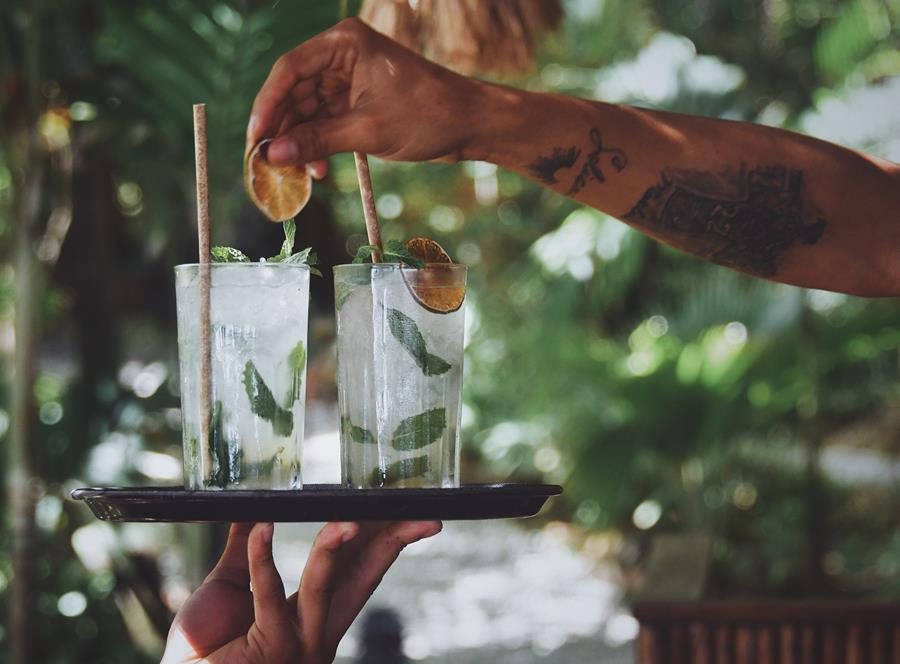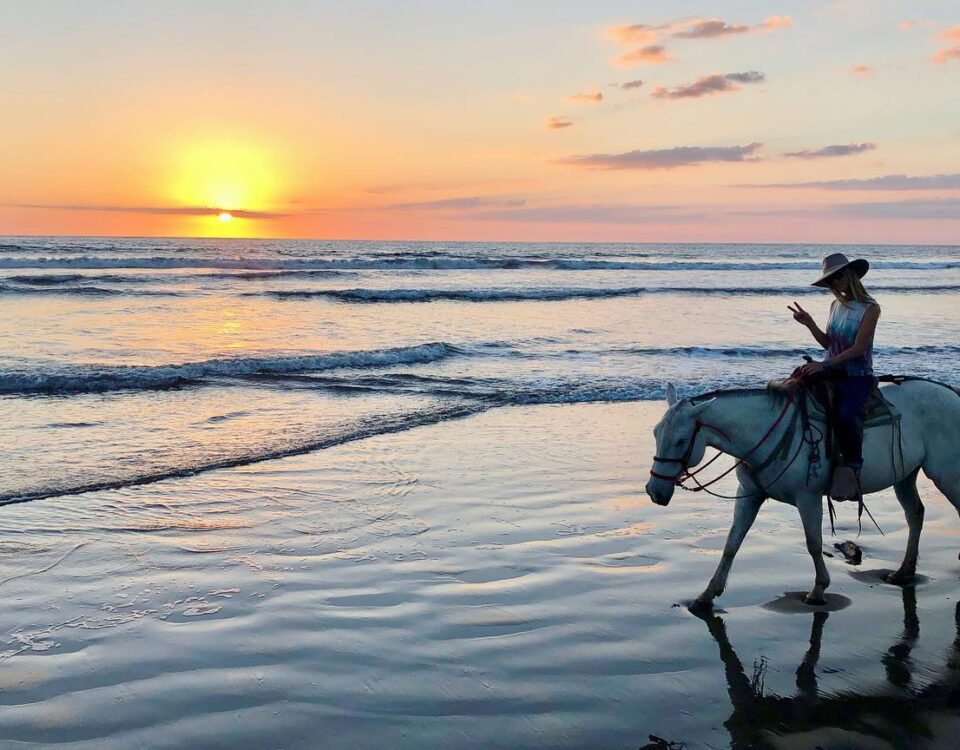Surfing 101: A Beginner’s Guide to Start Your Surfing Adventures

The 5 Best Seafood Restaurants in Santa Teresa, Costa Rica
April 25, 2023
How to Choose a Surfboard
September 13, 2023Surfing 101: A Beginner’s Guide to Start Your Surfing Adventures
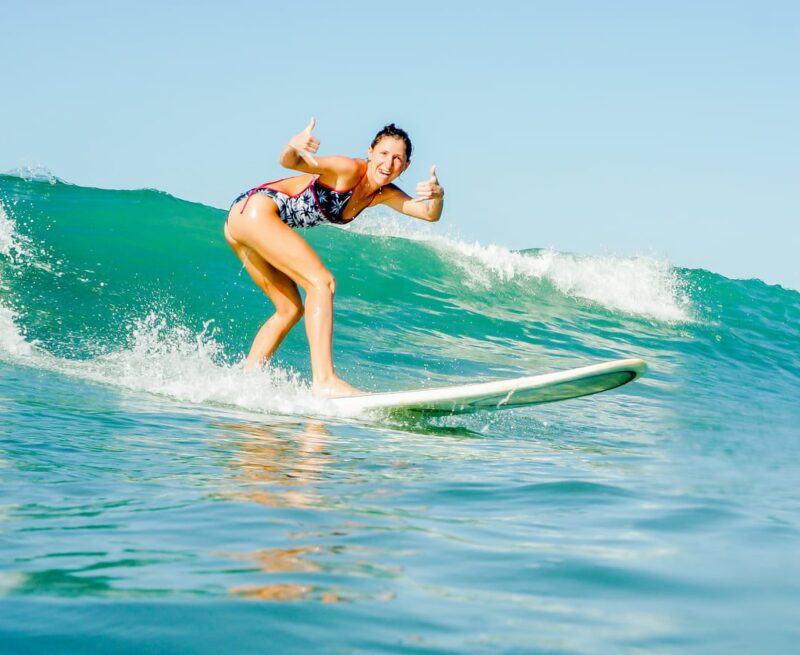
If you’re new to surfing and dreaming of catching your first waves, look to the experts for guidance. For almost 20 years, Pura Vida Adventures in Santa Teresa, Costa Rica has been teaching people of all ages and abilities the life-changing sport of surfing. Here’s what this top-rated surf camp thinks all beginner surfers should know.
1. Visit a Surf Destination
Make it easy on yourself: Choose a beginner-friendly surf destination like Costa Rica to kick-start your surfing adventures. Because Costa Rica is a mecca for surfing, there’s plenty of support there for beginner surfers, so you’ll find an abundance of surf classes, surf camps, and surfboard rentals in the country’s top surfing destinations.
You’ll also be treating yourself to the vacation of a lifetime. Named “The Happiest Country in the World,” Costa Rica is home to pristine beaches, breathtaking nature, and miles of gentle waves for first-time surfers. And the best part? Warm ocean water. Don’t even think about wearing a wetsuit here! All you’ll need is a comfortable swimsuit and a rash guard (surf shirt) for sun protection.
2. Take a Beginner’s Surf Class (Essential)
Now that you’ve based yourself in Costa Rica, sign up for a beginner’s surf class. Or better yet, take a series of classes… or even BETTER yet, join a surf camp (skip to Step 3). If you only have time for a few lessons, ask your hotel for surf instructor recommendations or stop by a local surf shop. They can easily set up a surf lesson for you.
For a beginner surfer, taking at least a few lessons is absolutely essential for a safe and fun experience. Surfing is not the kind of sport you can just pick up by playing around in the ocean with a random surfboard – do this, and you run the risk of being endlessly frustrated, endangering the safety of yourself and others, and looking like a kook (surf slang for an inexperienced surfer with a bit too much confidence). There’s no need to waste your precious time in Costa Rica doing this. Instead, get the fundamentals before you paddle out on your own. Surf lessons typically last a few hours and include a beginner surfboard rental. Taking lessons is the best investment you can make if you’re serious about learning how to surf.
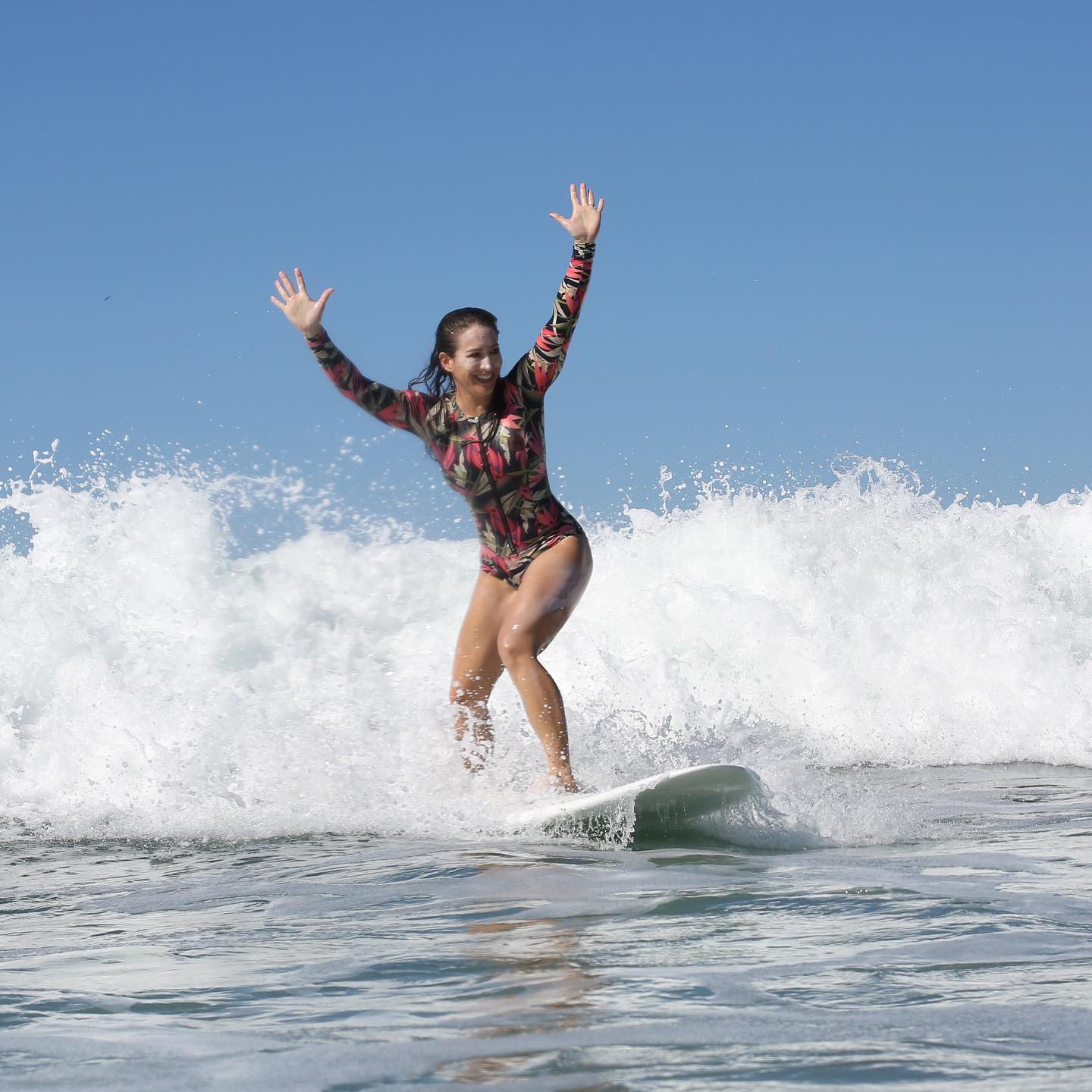
Catch more waves by learning the fundamentals with a surf instructor.
3. Join a Surf Camp
Got a week to spend surfing? Surf camps take regular surf lessons to a whole other level of awesomeness. They’re ideal for beginners who want the fastest, most fun, and most rewarding way to learn to surf. An expert surf instructor team will carefully guide you through an entire week of surf lessons so that you can feel confident and safe in the ocean while not wasting any time. Many people who attend a surf camp in Costa Rica say it’s a life-changing experience. That’s because it’s a special opportunity to dedicate a full week to learning a new skill while also making new friends and having incredible adventures in a bucket-list destination.
Do your research – the best surf camps in Costa Rica have a fun and highly experienced instructor team, accommodations on the beach, daily yoga, and healthy meals included. Check out Pura Vida Adventures in Santa Teresa, one of Central America’s top surf camps for beginners. Guests rave about their experiences here, and many come back year after year. Pura Vida Adventures offers women’s only camps, coed camps, and special surf camp weeks to celebrate Thanksgiving and New Year’s which are especially popular.
4. Understand Your Surfing Gear: The Longboard
See those effortlessly cool surfers on their tiny short boards ripping up the waves and flying through the air? Those are not beginner surfers. And their itty-bitty surfboards? Those are definitely not beginner boards. If you’re serious about learning to surf (and not just looking cool), then it’s time to go big. The longboard is your new best friend. Longboards typically range between 8 feet and 10 feet in length and have a rounded nose. Thankfully, if you’ve followed #2 or #3 on this list, your surfing gear is already taken care of for you, and guess what – it’s going to be a longboard.
At top surf camps like Pura Vida Adventures, the “quiver” (collection of surfboards) is fully stocked with high-quality longboards designed especially for beginners. For your first surf lessons, your surfing gear will consist of a great big longboard that will make it easy to practice the techniques of paddling and popping up. Longboards offer the stability that all beginner surfers need to master the fundamentals of the sport, and they should always be the first choice of a beginner surfer. Plus, we think longboard surfers are pretty cool too.
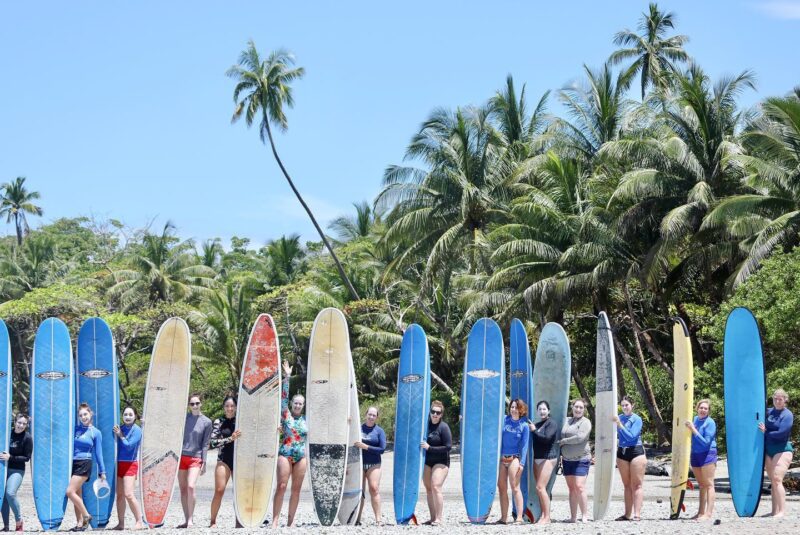
Longboards make it easier to practice the fundamentals of surfing, like paddling and popping up.
5. Stay Safe in the Ocean
Keep yourself safe and protect other surfers around you by understanding how to handle your surfboard properly while in the ocean. Keep ahold of your board at all times, as a flying longboard has the potential to seriously injure anyone it comes into contact with. You should never let go of your board, or “throw” it while you are in the ocean, especially if you are in close proximity to other surfers. Make holding on to your board an absolute priority if you are a beginner surfer, and always follow the technique given to you by your surf instructor.
Ocean safety also requires a knowledge of the surf breaks, including tides, rip currents, and weather conditions – which is why it’s essential to hire a local surf instructor or join a surf camp if you are a beginner surfer. Your surf instructor team will only take you to a surfing beach that is appropriate for your fitness and skill level, and they’ll keep a close watch on you while you’re there.
6. Have Fun!
Finally, perhaps the most important piece of advice for beginner surfers comes from Hawaiian surf legend Duke Kahanamoku, who is often quoted as saying: “The best surfer out there is the one having the most fun.” It’s true! Surfing is special because of the genuine camaraderie among surfers and the good vibes it produces. There’s no doubt that surfing can also be extremely frustrating, with highs and lows in each surf session. But for those few magic moments of gliding down a wave, it’s all worth it. Just be patient and enjoy the journey.
As you’re learning how to surf, keep things in perspective and focus on positivity. Stay safe, but don’t take yourself too seriously. Let yourself play like a kid again! Cheer on your fellow surfers and laugh together at your wipeouts. Be courteous and respectful of others and share the waves. Relax a little, smile, and feel the surf stoke! Now you’re surfing.

